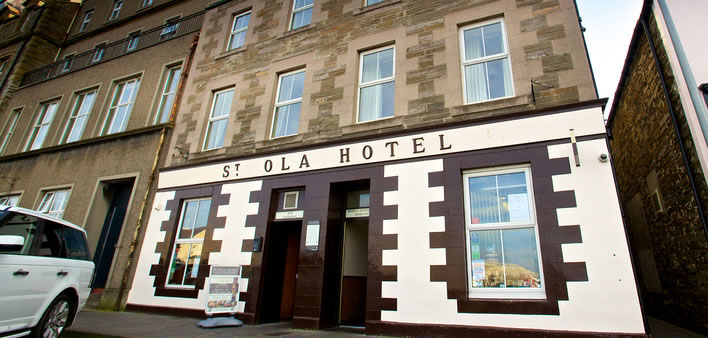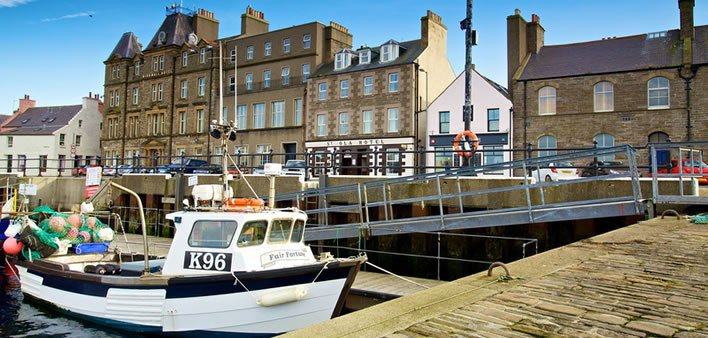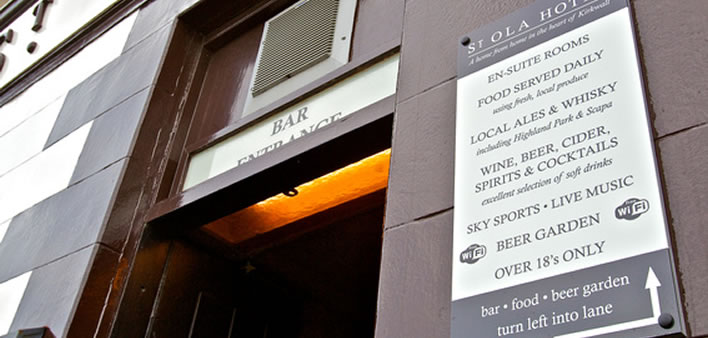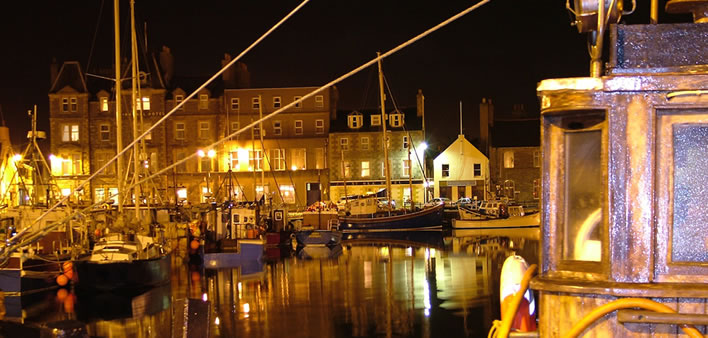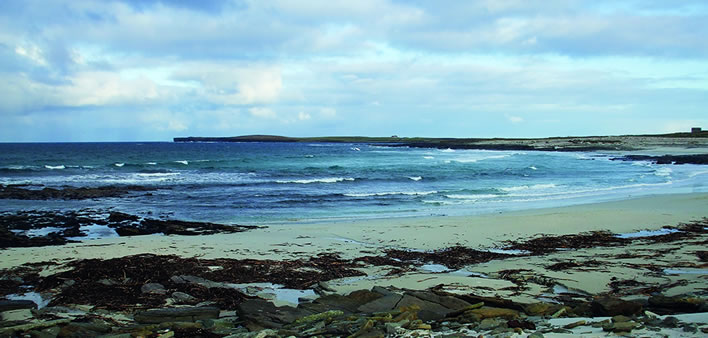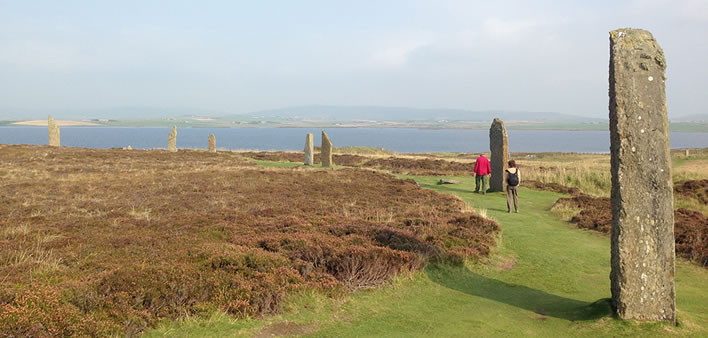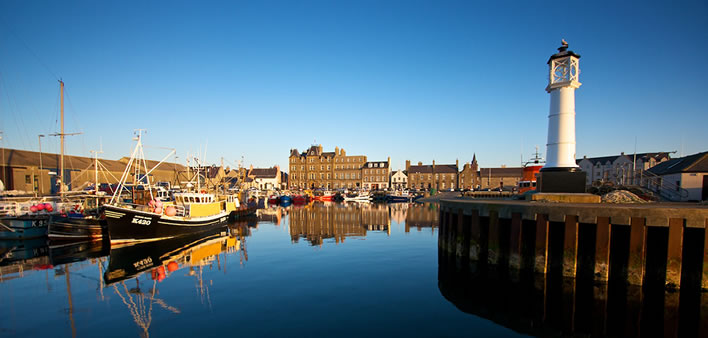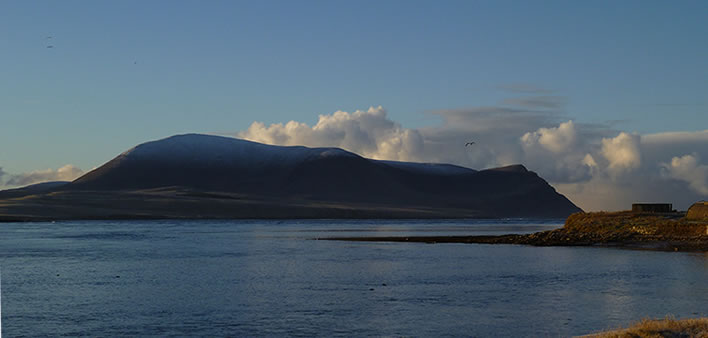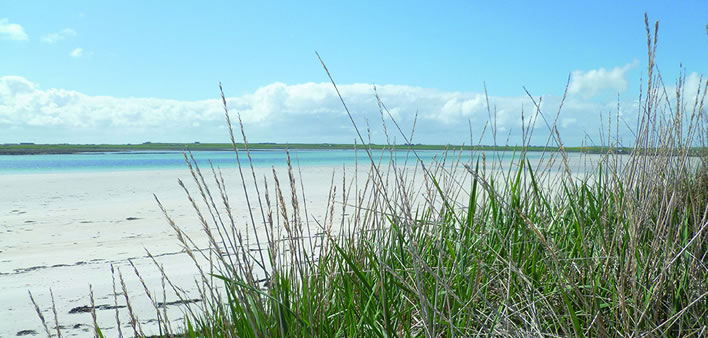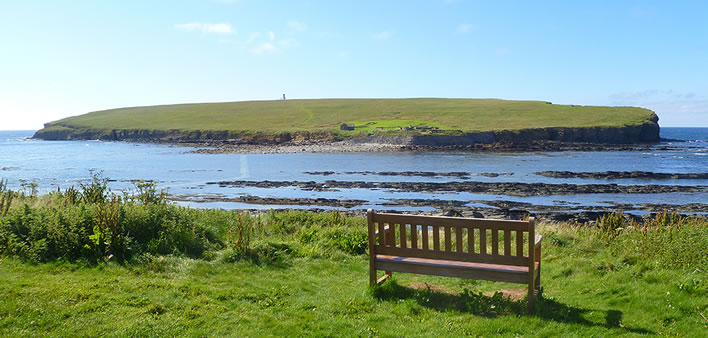Throughout its lifetime the building has provided a window onto Kirkwall bay and the fortunes of the site are entwined with those of the city itself (thanks to its Cathedral, Kirkwall is a city, despite having only 12,000 inhabitants). The present building is on the site of the original 'Inns of Sinclair', built by one of the Scottish Earls who ruled Orkney during the 14th and 15th centuries. It was a large and imposing building which dominated the seafront. While the buildings and street we see today are very different from those which existed in Viking times, on this site, history has been made and witnessed.
The Inns on the waterfront continued to be at the heart of community life, and their inhabitants witnessed huge changes during peace and wartime. The new main pier was constructed opposite the hotel in 1812, during a period of significant expansion for the town, as the booming herring fishery brought workers in their hundreds.
The modern era of what is now the St Ola Hotel can be traced directly back to 1875 when the various waterfront buildings were sold at auction to one Mary Geddes, wife of John Geddes described as a 'druggist' or wine and spirits merchant, who sold it on to Gordon Webster who ran a hotel on the premises until the outbreak of World War I.
As Orkney was flooded with servicemen and strict military rules were imposed, the Hotel would have been a popular gathering place, but licensing hours were severely restricted. This was a precursor to the temperance movement, which led to the closure of all but two hotels with public bars in Kirkwall in the 1920s - the Kirkwall and St Ola Hotels. By the time the restrictions were lifted, Gordon Webster and his family had moved on after more than a quarter of a century on the premises. The Hotel's First World War heritage is represented by the propellor which has been a feature of the front bar for four decades.
Following the Second World War, the advent of air travel brought visitors from far and wide. Among those to stay at the St Ola Hotel were American author and disability rights campaigner Helen Keller immortalised in the 1962 film 'The Miracle Worker', who described the hotel as "too good for words". Although it had survived the war unscathed, the hotel was badly affected by hurricanes and flooding in the early 1950s, but avoided the worst of the damage and continued to thrive and remained the landmark it is today on Kirkwall's Harbour Street.
Image credits:
Kirkwall Harbour: The view from the front door of the St Ola hotel: the basin of Kirkwall Harbour saw fishing vessels and trading ships not only from Scotland but many countries in Europe. (Picture courtesy of Orkney Library photographic archive)
Ola Hotel 1905-1906: This picture of the St Ola hotel was taken in 1905-6. It shows the proprietor Gordon Webster and his wife Elizabeth, his young son Alec, who was born in 1903, and one of Alec’s three young sisters, probably Mary. (Picture courtesy of Duncan Webster)
Minesweepers in Kirkwall Bay Kirkwall Bay – and the view from the St Ola – is dominated by American minesweepers in August, 1919. (Picture courtesy of Orkney Library photographic archive)
St Ola dining room 1930s: The St Ola dining room in the 1930s. Mrs Stephen, who ran the hotel for a generation, and whose son Willie and daughter Ella later owned it, is pictured in the centre. Second right is the hall porter Jimmy Swanson, originally from Thurso, who tragically lost his life in the Longhope Lifeboat disaster of 1969. (Picture courtesy of Orkney Library photographic archive)
Storm of January 31, 1953: A scene of devastation the day after the 1953 storm of January 31. Shore Street and Harbour Street – in front of the St Ola – were filled by the debris of smashed concrete and tangled pipelines. (Picture courtesy of Orkney Library photographic archive)
Aerial view of Kirkwall Harbour and Bay: The present century has dawned and this picture from the air shows the St Ola hotel and the basin at Kirkwall Harbour. (Picture courtesy of Craig Taylor)

